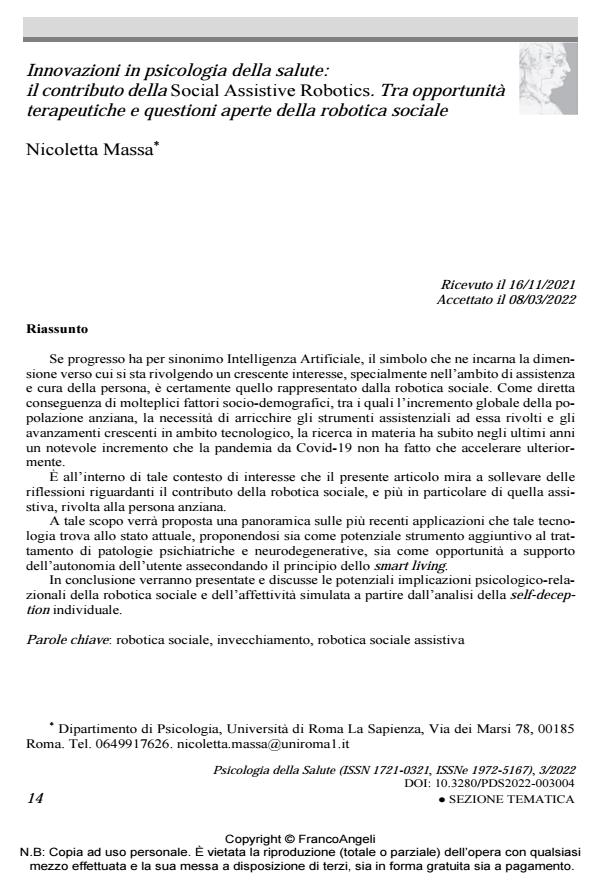Innovations in Health Psychology: the contribution of Social Assistive Robotics. Therapeutic opportunities and open questions of social robotics
Journal title PSICOLOGIA DELLA SALUTE
Author/s Nicoletta Massa
Publishing Year 2022 Issue 2022/3
Language Italian Pages 14 P. 14-27 File size 221 KB
DOI 10.3280/PDS2022-003004
DOI is like a bar code for intellectual property: to have more infomation
click here
Below, you can see the article first page
If you want to buy this article in PDF format, you can do it, following the instructions to buy download credits

FrancoAngeli is member of Publishers International Linking Association, Inc (PILA), a not-for-profit association which run the CrossRef service enabling links to and from online scholarly content.
If progress is synonymous with Artificial Intelligence, then social robotics represents a field that has gained growing interest in recent years, especially for its potential applications in the assistance and healthcare system. As a direct consequence of multiple socio-demographic factors, including the global in-crease in the elderly population, the need to enhance and update the therapeutical tools availa-ble, and the growing advances in technology, the research on the presented subject is receiving greater attention that the Covid-19 pandemic has only amplified further. In this context of interest, this article aims to point out the contribution of social robotics, more specifically of assistive robotics, for the elderly population. To this end, an overview of the most recent applications of this technology is proposed, starting with the analysis of its applications both in the clinical setting with psychiatric and neurodegenerative pathologies and in a private one as an opportunity to support the user’s au-tonomy in daily life. In conclusion, the potential psychological-relational implications of social robotics and simulated affectivity are enlighted and discussed through the analysis of the user’s self-deception.
Keywords: social robotics, aging, social assistive robotics
Nicoletta Massa, Innovazioni in psicologia della salute: il contributo della Social Assistive Robotics. Tra opportunità terapeutiche e questioni aperte della robotica sociale in "PSICOLOGIA DELLA SALUTE" 3/2022, pp 14-27, DOI: 10.3280/PDS2022-003004